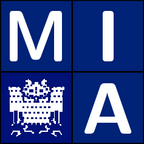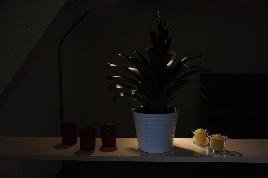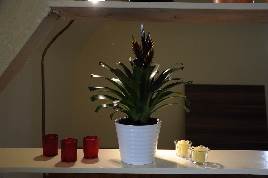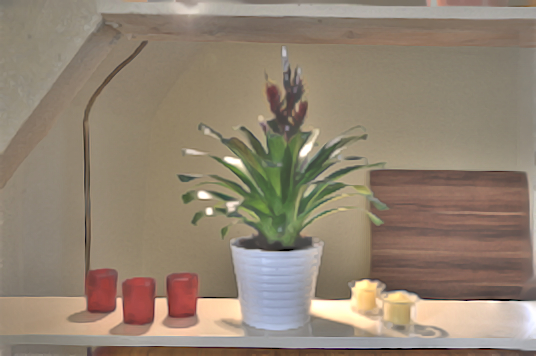
Supplementary Material Page
Home
About Us
People
Teaching
Research
Publications
Awards
Links
Contact
Internal
Freehand HDR Imaging of Moving Scenes
with Simultaneous Resolution Enhancement
EUROGRAPHICS 2011
Henning Zimmer1
Andrés Bruhn2
Joachim Weickert1
1Mathematical Image Analysis Group,
Saarland University, Campus E1.1, Saarbrücken, Germany
{zimmer,
weickert}@mia.uni-saarland.de
2Vision and Image Processing Group,
Saarland University, Campus E 1.1, Saarbrücken, Germany
bruhn@mmci.uni-saarland.de




|

|
|---|
Left: Four images of an exposure series (8 images, 268×178 px., exposures from 1/200 to 1/8 s). Right: Our result after alignment plus joint dynamic range and resolution enhancement.
Abstract
Despite their high popularity, common high dynamic range (HDR) methods are still
limited in their practical applicability: They assume that the input images are
perfectly aligned, which is often violated in practise.
Our paper does not only free the user from this unrealistic limitation,
but even turns the missing alignment into an advantage: By exploiting the
multiple exposures, we can create a super-resolution image.
The alignment step is performed by a modern energy-based optic flow approach
that takes into account the varying exposure conditions.
Moreover, it produces dense displacement fields with subpixel precision.
As a consequence, our approach can handle arbitrary complex motion patterns,
caused by severe camera shake and moving objects.
Additionally, it benefits from several advantages over existing strategies:
(i) It is robust under outliers (noise, occlusions, saturation problems) and
allows for sharp discontinuities in the displacement field.
(ii) The alignment step neither requires camera calibration nor knowledge of the
exposure times.
(iii) It can be efficiently implemented on CPU and GPU architectures.
After the alignment is performed, we use the obtained subpixel accurate
displacement fields as input for an energy-based, joint super-resolution and HDR
(SR-HDR) approach.
It introduces robust data terms and anisotropic smoothness terms in the SR-HDR
literature.
Our experiments with challenging real world data demonstrate that these
novelties are pivotal for the favourable performance of our approach.
Welcome to the supplementary material page for our paper
Freehand HDR Imaging of Moving Scenes
with Simultaneous Resolution Enhancement which
has been presented at EUROGRAPHICS 2011
(Llandudno, Wales, UK, April 11-15, 2011).
Please choose from the following:
MIA Group
©2001-2023
The author is not
responsible for
the content of
external pages.
Imprint -
Data protection